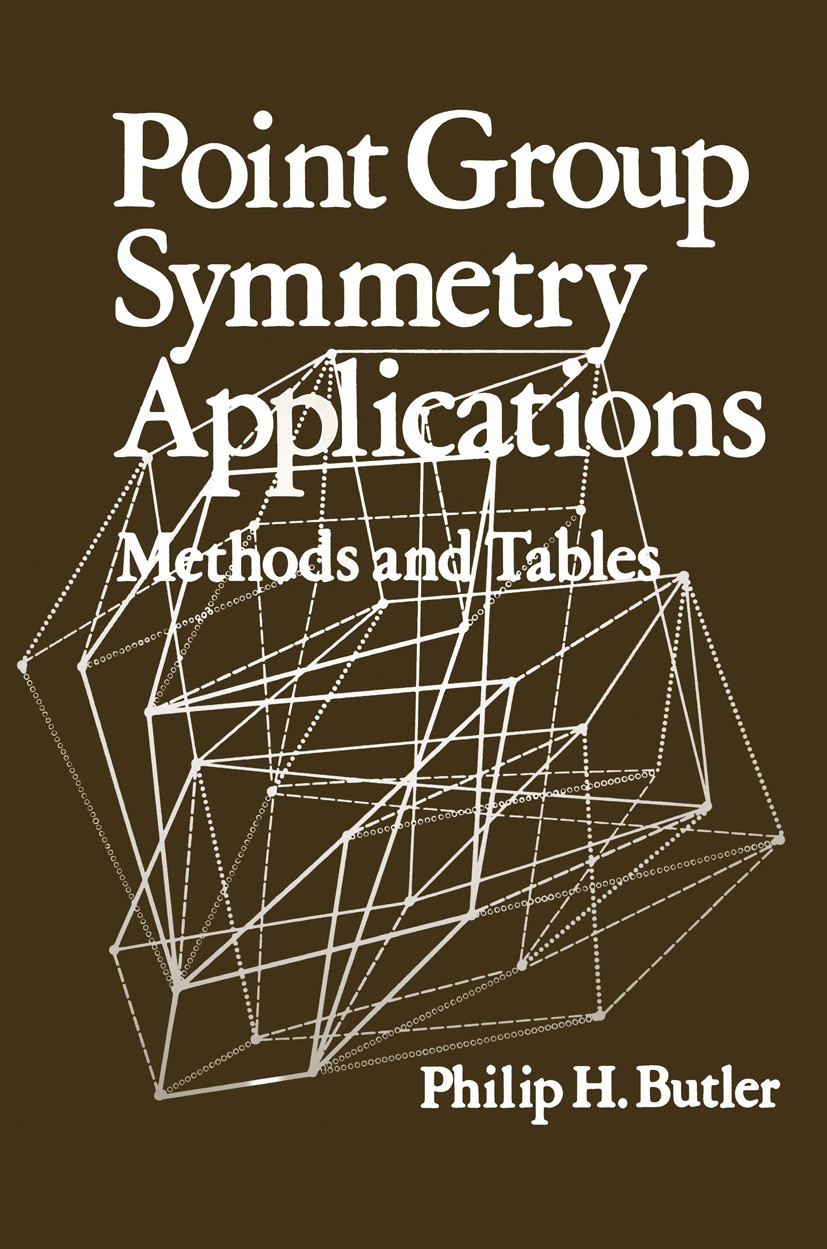| 书目名称 | Point Group Symmetry Applications | | 副标题 | Methods and Tables | | 编辑 | Philip H. Butler | | 视频video | http://file.papertrans.cn/750/749685/749685.mp4 | | 图书封面 |  | | 描述 | The mathematical apparatus of group theory is a means of exploring and exploiting physical and algebraic structure in physical and chemical prob lems. The existence of structure in the physical processes leads to structure in the solutions. For group theory to be useful this structure need not be an exact symmetry, although as examples of exact symmetries we have that the identity of electrons leads to permutation symmetries in many-electron wave functions, the spatial structure of crystals leads to the Bloch theory of crystal eigenfunctions, and the rotational invariance of the hydrogenic Hamiltonian leads to its factorization into angular and radial parts. In the 1930‘s Wigner extended what is known to mathematicians as the theory of group representations and the theory of group algebras to study the coupling coefficients of angular momentum, relating various properties of the coefficients to the properties of the abstract group of rotations in 3-space. In 1949 Racah, in a paper on rare earth spectra, showed that similar coefficients occur in other situations. Immediately a number of studies of the coefficients were begun, notably by Jahn, with his applications in nuclear physic | | 出版日期 | Book 1981 | | 关键词 | algebra; crystal; development; electrons; energy; high-energy physics; hydrogen; nuclear physics; physics; pr | | 版次 | 1 | | doi | https://doi.org/10.1007/978-1-4613-3141-4 | | isbn_softcover | 978-1-4613-3143-8 | | isbn_ebook | 978-1-4613-3141-4 | | copyright | Plenum Press, New York 1981 |
The information of publication is updating

|
|
 |Archiver|手机版|小黑屋|
派博传思国际
( 京公网安备110108008328)
GMT+8, 2025-11-22 17:02
|Archiver|手机版|小黑屋|
派博传思国际
( 京公网安备110108008328)
GMT+8, 2025-11-22 17:02


